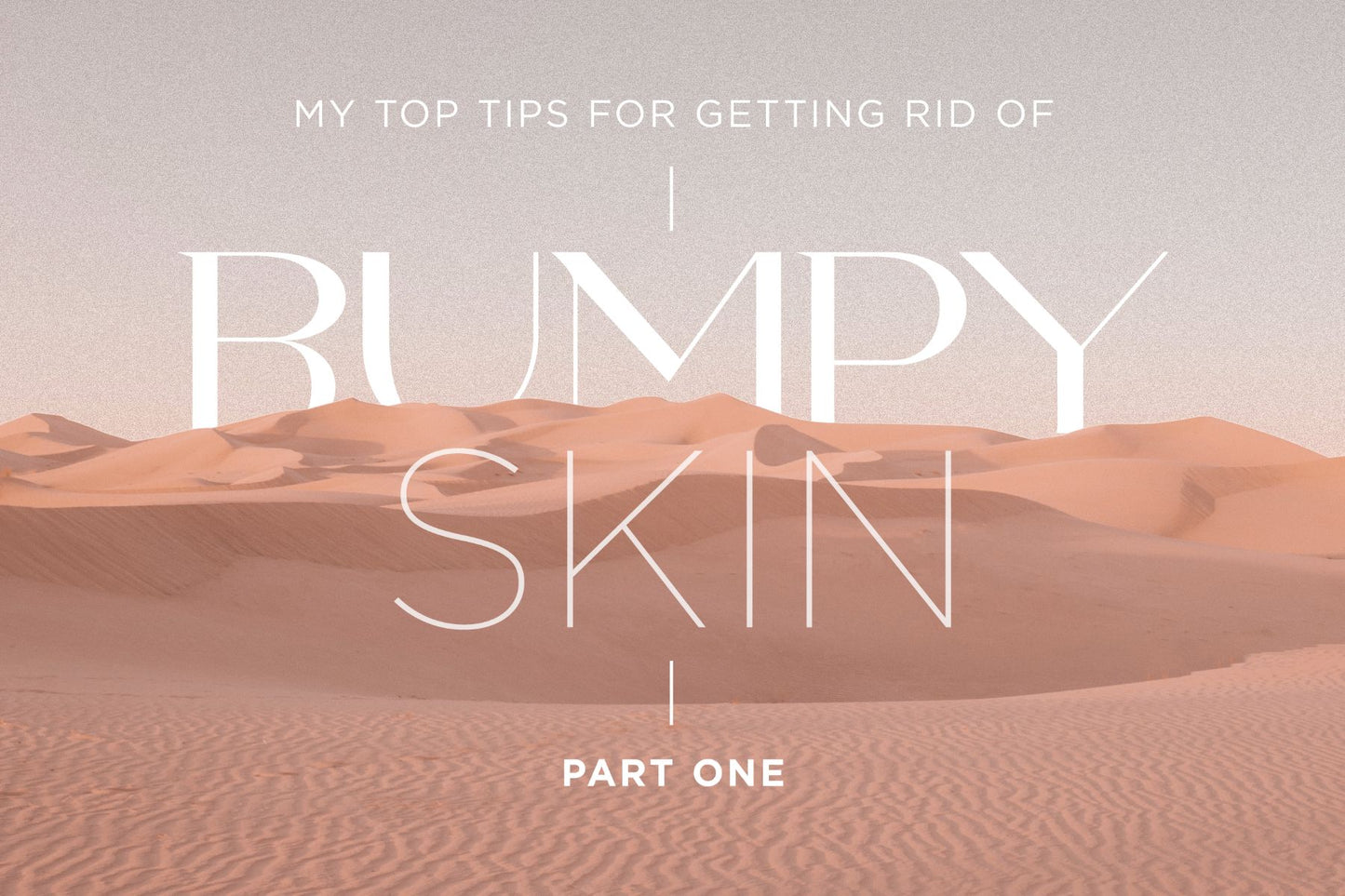
Uneven skin texture is one of the most common skin issues I see in my clinic.
But while bumpy skin can occur for a range of different reasons, establishing exactly what type of bumps you have - and how to treat them accordingly - can be a minefield.
In part one of my series on bumpy skin, we’ll talk about the top 3 types of bumpy skin - subliminal acne, milia and rosacea - and how to get rid of them.
SUBLIMINAL ACNE
So we’re not talking about regular pimples here. Subliminal acne refers to those bumps, aka whiteheads, that never seem to develop a head and aren’t painful. They usually crop up on the cheek, forehead, jawline, and if left untreated can turn into inflamed pimples. It’s the body’s way of getting rid of the blockages.
HOW TO TREAT IT:
Exfoliate with AHAs and BHAs:
Early intervention is prevention. The best way to do this is with ingredients that stop congestion in the first place. Dermatologists, including myself, are partial to BHAs like salicylic acid, as the ingredient is oil-soluble and can penetrate deep into the hair follicles. It exfoliates the surface of the skin and penetrates into pores to remove congestion. This is preventative and helps remove clogs that have already formed. Topical AHAs also have a comedolytic effect (meaning they help to prevent and treat clogged pores). You’ll find AHAs and BHAs in my Concentrated Clarifier, Spot Destroyer and Concentrated Micropeel. What’s more, they give your skin a total rejuvenation working on ageing, pigmentation and sun damage!
Use a gentle, non-stripping cleanser: Contrary to popular belief, stripping the skin of all its oils with harsh, drying cleansers only causes the skin to produce more oil. My Concentrated Cleanser contains no soap, no foaming agents and no harsh ingredients and is perfect for AM and PM use.
Use a non-comedogenic moisturiser: It’s a myth that acneic skin doesn’t need moisture and hydration. Hydrated skin ALWAYS performs better than dry skin. Our exfoliating enzymes NEED moisture to work. The right moisturiser with anti-inflammatory vitamin B3 will actually rebalance the skin and prevent and help breakouts, by sending biofeedback to the sebaceous glands, which makes them calm down and reduce oil output.

SHOP MY TOTAL SKIN GLOW + ACNE KIT NOW
See a dermatologist for a consult & in-clinic treatment: The Hydrafacial at my Face Bar goes a long way to resolving stubborn congestion, giving instantaneous results. If your acne is more inflammatory and cystic in nature, you will need the help of a dermatologist to make sure you are getting to the bottom of the problem.
MILIA
You know those stubborn little white or yellow bumps in the surface of the skin that cannot be popped and never seem to go away? It’s probably milia. It's a pretty common condition, typically found on the face above the cheekbones and under the eyes. These white spots aren’t actually classified as acne. Milia are cysts filled with keratin that get trapped beneath the surface of the skin.
HOW TO TREAT IT:
Chemical exfoliation: Again, exfoliating can help keep the pores clear. A combination of both salicylic acid (BHA) and AHAs (like lactic acid) to slough off excess dead skin. You can add in a prescriptive vitamin A a few nights a week. These ingredients help prevent milia. But many will still need extracting. Check out my DrNC Concentrated Clarifier, Concentrated Micropeel and Concentrated Spot Destroyer.
See a dermatologist to have them extracted: Let's be clear: Do not try to extract milia at home! They aren't easy to remove and can easily cause damage to your skin. If you do want to have them removed, visit a dermatologist who can expertly extract the cysts. The Hydrafacial at my Face Bar can also be very effective.
Leave them be: If they don't bother you, it's best to leave milia alone. They can resolve themselves in their own time.
ROSACEA
Rosacea is an inflammatory skin condition that can cause small red bumps on the face, swelling, and a predisposition to intense pink/red flushing, typically concentrated on the cheeks, nose and forehead and chin. It’s important to note these bumps are not pimples (or blackheads or whiteheads) and usually don’t have a head. In fact, the lack of blackheads and whiteheads is consistent with the diagnosis.
HOW TO TREAT IT:
Use a gentle cleanser: Anything too harsh or abrasive will simply irritate the skin and make your rosacea worse. Check out my DrNC Concentrated Cleanser.
Use an anti-inflammatory products containing niacinamide/vitamin B3: Niacinamide, aka vitamin B3, is an amazing calming ingredient with soothing anti-inflammatory and anti-bacterial properties to help reduce redness. It also strengthens and stabilises the barrier function and reduces sensitivity, essential for us pink people! Try my DrNC Concentrated Moisturiser and DrNC Concentrated Hydration.
Use salicylic acid: Did you know that salicylic acid, as well as being an amazing acne-fighting ingredient, is also an incredible anti-inflammatory? The DrNC Concentrated Micropeel can work wonders when it comes to settling those lumps and bumps overnight.
Anti-inflammatory antibiotics: Sometimes you’ll need a little help from your dermatologist and a course of 4-8 weeks of a tetracycline antibiotic, eg minomycin, doxycycline or erythromycin.
Try an in-clinic treatment: Redness can be addressed with vascular lasers, like the Cutera Excel V and the Spectra laser. Usually 2-4 treatments are needed. The added bonus is you’ll not only get rid of the redness, but you’ll ALSO end up with rejuvenated skin.
Check out our solution for bumpy skin, our Total Skin Glow & Acne Kit.
STAY TUNED FOR PART 2!

























